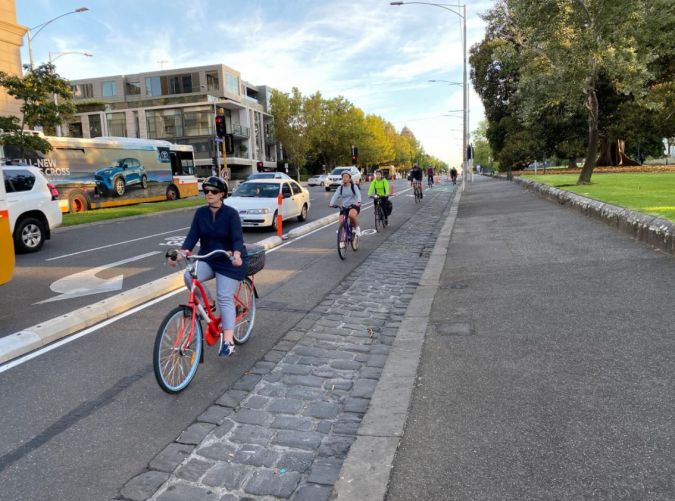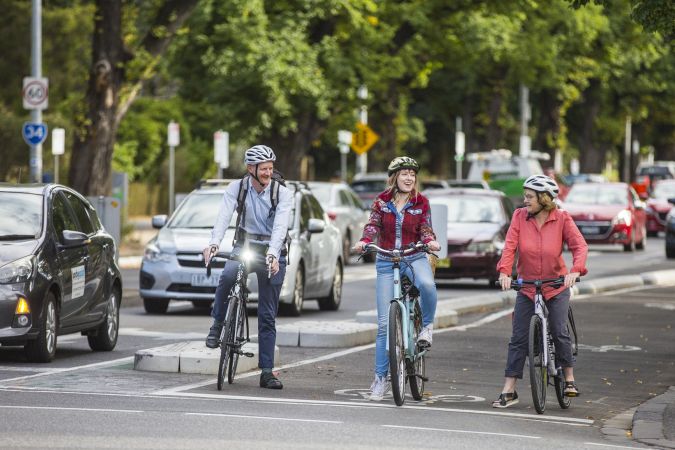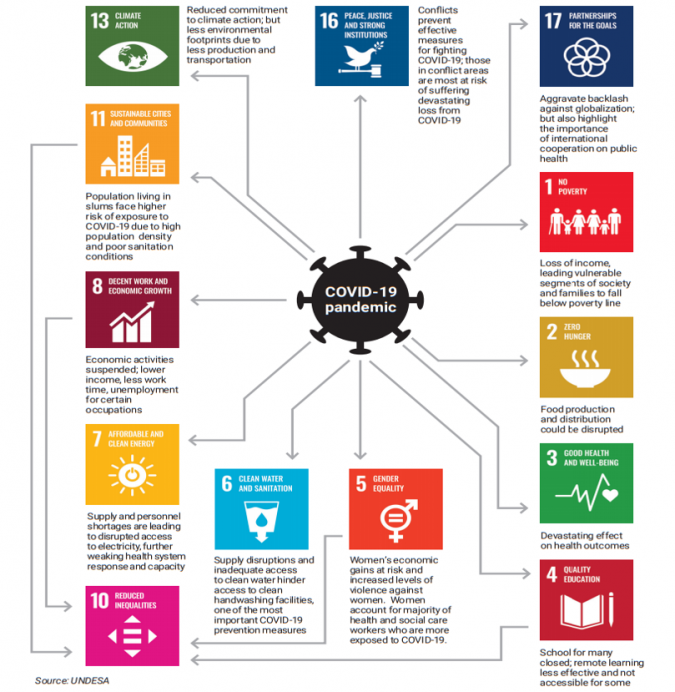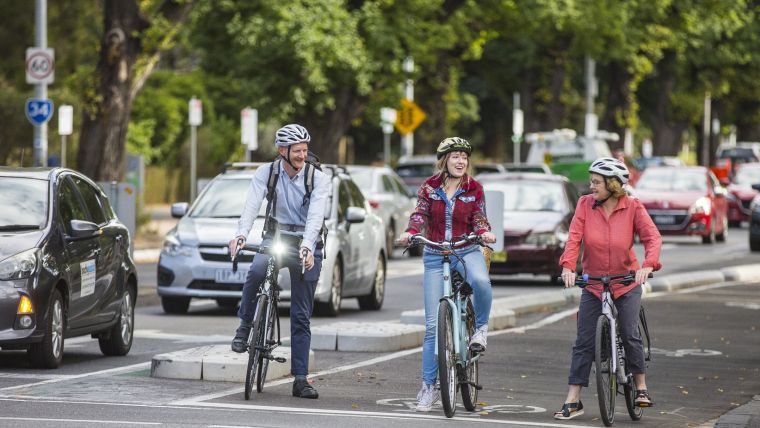SDG 11 as a ‘Glocal’ Framework
The Challenges of Implementing Global and National Goals at City Level
In urban planning, there is a case for stronger connections between global and local (‘glocal’) issues, strategies and actions. How can the Sustainable Development Goals (SDGs) help local governments to address sustainability, urban resilience and the potential use of digital tools to progress to a sustainable future?
For a city to thrive, its growth needs to be well managed. This is best achieved through the implementation of policies and systems that balance social, economic and environmental outcomes and foster the development of vibrant, active neighbourhoods and people-centric places – in other words, ‘cities for people’.
Governments at all levels in numerous jurisdictions have made commitments to implement the United Nations’ Sustainable Development Goals (SDGs) as part of future city plans and urban policies. Digital technology is currently being adapted and developed to support this process. The City of Melbourne, Australia, is currently localizing the SDGs for use as a framework in the 2021-25 Council Plan to guide the sustainable development of the city, addressing the challenge of implementing global and national goals at a local city level.
The authors of this article believe there is a case for stronger connections between global and local (‘glocal‘) issues, strategies and actions. In addition, they regard the SDGs as an implementation framework for local governments to address sustainability, urban resilience in the face of disruptive events (such as a pandemic and climate change) and the potential use of digital tools to progress to a sustainable future.

SDG 11: The City Goal
Cities play a critical role in the SDGs overall, and sustainable city planning and development is a priority. The aim of SDG 11, the so-called ‘city goal’, is to ‘Make cities and human settlements inclusive, safe, resilient and sustainable’. It contains ten targets and 15 indicators. Some of these relate to the provision of sufficient high-quality public space, which is a key component of a sustainable city:
- Target 11.7: By 2030, provide universal access to safe, inclusive and accessible, green and public spaces, in particular for women and children, older persons and persons with disabilities.
- Indicator 11.7.1: Average share of the built-up area of cities that is open space for public use for all, by sex, age and persons with disabilities.
- Indicator 11.7.2: Proportion of persons victim of physical or sexual harassment, by sex, age, disability status and place of occurrence, in the previous 12 months.
Direct connections can be drawn between public-realm and open-space improvements in cities and the achievement of lively, safe, sustainable and healthy cities for people (Gehl, 2010). Compared with other social investments, Gehl contends that the cost-benefit ratio of investing in the human dimension of cities easily outstrips that of healthcare and road infrastructure.

Coexistence with COVID-19 Pandemic
It is difficult to accurately forecast how the health and economic crisis caused by the current COVID-19 pandemic might impact the long-term shape of urban environments. However, it is evident that those populations with the least resources are the most impacted. In various cities, including Melbourne, co-existence with the pandemic has seen street space repurposed for outdoor dining and retail trading, together with prioritizing pedestrians and cyclists over motor vehicles.
Public spaces are where people meet and bring life to cities; the public realm traditionally provides the space for people to engage in commerce, exchange and social activities. These are all reliant upon the presence of others (Gehl, 2010). The human need and the desire for social connection is hard to suppress and, until mass vaccination and other measures effectively contain the COVID-19 threat, new measures may need to be identified to anticipate and adapt to emerging hazards and continue to safeguard citizens. Governments around the world have enforced physical distancing measures, closed major cultural and sporting venues, enacted ‘work from home’ rules and other lockdown measures. The following three human spatial factors are worthy of future consideration:
- Density: how many people gather in a location for specified time periods
- Proximity: how close people are to one another
- Mobility: how people move around cities.
These three factors are also important ingredients in the design, planning and management of public spaces within cities. Figure 5 summarizes likely impacts of COVID-19 on attaining the SDGs.

Sustainable Urbanization – Cities are our Future
According to the UN Department of Economic and Social Affairs (UNDESA), more of the world’s population now live in urban areas than in rural areas. In 2018, 55% of the world’s population lived in cities and this is expected to reach 68% by 2050 (UNDESA, 2019). The goal of sustainable urbanization is dependent upon the delivery of necessary infrastructure, services, employment and opportunity for all, “leaving no one behind “(UNDESA, 2019). Sustainably planning for and managing urbanization is a challenge for governments, policymakers and city administrators. Countries and regions that embrace resilience and sustainability to manage growth are best placed to deliver health and human wellbeing to their citizens. Likewise, cities that embrace sustainability, respect heritage, place and people, and allocate public spaces for all are best able to build inclusive and strong communities.
Implementation of SDG 11
Achieving SDG 11 relies upon skillful and pragmatic local approaches to urban challenges in a global context. In 2020, the UN-Habitat and United Cities and Local Governments (UCLG) (UN-Habitat, 2020) published Monitoring and Evaluating National Urban Policy: A Guide to assist countries in developing, reviewing and implementing national urban policies and addressing multifactorial urban issues at the levels of country, region, city and neighbourhood. The document sets out a step-by-step approach to measure, monitor and manage urban policy to support implementation of SDGs and the New Urban Agenda (UN-Habitat, 2020). How SDG 11 is achieved will vary from city to city in both developed and developing countries, with some still requiring significant improvements to meet SDG targets while others have already taken major steps to do so.

Resilience
Developing urban resilience is a key factor outlined in the New Urban Agenda (NUA) initiated by UN-Habitat (United Nations Human Settlement Program). UN-Habitat acknowledges the vulnerability of cities to the risks associated with both human-caused and natural disasters. These challenges present a range of stresses including accelerated urbanization, political instability, the current COVID-19 pandemic and climate change (United Nations, 2020).
Resilient cities seek to plan for all citizens, effectively ‘planning for the worse (i.e. disasters) and hoping for the best’ in terms of economic, environmental and social outcomes. In this context, resilience implies urban systems that can withstand shocks and stresses (UN-Habitat, 2020). A resilient city has the capacity to plan and act, and is prepared to respond to all hazards, either sudden or with a slow onset, expected or unexpected. By doing so, cities are better able to protect and enhance people’s lives, secure development gains, foster and invest in the environment and drive positive change. Resilience is a necessary attribute of a sustainable city (United Nations, 2015b).
Digital Tools and Frameworks for Implementation of SDG 11
As governments and policymakers develop and plan for urban resilience and future adaptability, the role of digital technology is evolving quickly and becoming increasingly indispensable. Currently, industry, academia and government and non-government organizations are uniquely placed to integrate and connect global geospatial information resources and to design new national geospatial strategic policies and frameworks to promote, measure and monitor progress towards implementation of SDGs (Scott and Rajabifard, 2017). Identifying the need for action in this area and the imperative to better promote international cooperation in global geospatial information management, the UN Economic and Social Council (ECOSOC) established the United Nations Committee of Experts on Global Geospatial Information Management (UN-GGIM) in July 2011. As digital monitoring tools become more integrated and holistic, they will require new and larger amounts of data and more sophisticated frameworks to enable rigorous analysis and information management. Disaggregating data by demographics or ‘people’ actors and analysing these with geographic or ‘place’ data enables connections and relationships between ‘people and place’ to be measured. This is critical for the implementation of SDG 11 and aids urban planning, the design of smart cities and sustainable urban development strategies (Yanga and Rajabifard, 2019; Rajabifard et al., 2019; Scott and Rajabifard, 2017).
In recent decades industry and governments alike have applied analytics to improve productivity, generate competitive advantage and innovate. Recent technological advances allow innovative organizations to develop more sophisticated and larger analytics systems with potential to further develop machine-learning applications (Hall, 2016). In cities, municipalities have for some time utilized closed-circuit television (CCTV) to monitor and manage public spaces. Increasingly, local governments are using digital tools and social media to collect, analyse and make available data to other public-sector organizations and industry to inform planning and improve the design of the built environment. This generally involves the use of image analysis, movement counters, pattern recognition video and land information and is directed at improving city safety. However, the literature indicates that there is a need to improve the connection between decision-making, policies and the standard global indicators (Sabri and Rajabifard, 2019). The use of data analytics and technology and the development of accessible platforms will help in both monitoring and measuring the implementation of the SDGs, in particular SDG 11. This should, when combined with pragmatic action, inform decision-making. Meanwhile, the development of new platforms will improve the ability to report on the performance of cities in the area of sustainable development. Comparing city performance and sharing information in open platforms will likewise positively impact local, national and global efforts in this area.

Issues for Further Discussion
In addition to the increased use of digital platforms, pragmatic placemaking techniques are being utilized to engage communities in the design and creation of new public spaces involving a range of ‘local’ actions. Although it is challenging, contrasting these local actions with the ‘global’ initiatives required to implement SDG 11 allows potential linkages and gaps to be identified and investigated. Exploring these can help policymakers to identify common urban problems, while acknowledging that potential solutions are best implemented at the neighbourhood level, respectful of indigenous communities and local culture and practices. Developing new national geospatial frameworks to measure and monitor progress towards sustainable development offers good potential to extend the reach and benefits of SDGs with all citizens. Similarly, providing widespread affordable digital connectivity and building the capacity for people to acquire digital literacy promotes global participation in wide-ranging social and economic benefits (Thomas et al., 2019). The development of adaptable new digital platforms will enable policymakers and researchers to explore local issues in a global context.
Further action is required in terms of policymakers and researchers working with stakeholders to develop approaches to better measure and monitor performance. This will support the fulfillment of the SDG 11 aspirations, firstly by researching ‘who’s doing what’ to obtain an understanding of current best practices, and secondly identifying linkages and gaps and how filling those gaps might benefit policymakers, industry, entrepreneurs and urban dwellers. The following topics are therefore worthy of further investigation:
- Adaptation of existing platforms or development of new digital tools to measure and monitor implementation of SDG 11 at the local government level.
- Development of digital dashboards to communicate the progress of cities against SDG 11 and to compare international city performance. To allow consistent benchmarking and comparisons, these should account for different definitions of a ‘city’ (e.g. jurisdictional, conceptual, etc.).
- Development of systematic applications for digital tools to assist placemaking and to capture objective and subjective measures as ‘before and after’ urban intervention scenarios and present these as case studies.
- Research into relationships between the design of people-centric public spaces and spatial connections involving proximity, density and mobility in the context of epidemiological measures to control the spread of infectious diseases such as COVID-19.
- Exploration of connections between placemaking, resilient cities, sustainable urban development and the use of digital tools to promote human health and wellbeing.
About the SDGs
The United Nations (UN) Sustainable Development Goals (SDGs) are a set of global measures adopted by all UN Member States in 2015. Described by the UN as a shared pathway for ‘peace and prosperity for people and the planet, now and into the future’, the SDGs are high level, holistic and integrated, with 17 goals, 169 targets and 232 interrelated indicators. The goals seek to improve human health and well-being setting out strategies to improve education, eradicate poverty and reduce inequality through economic growth and increased environmental protection and measures to address climate change.
Further reading
Gehl, J., 2010. Cities for people. Island Press, Washington DC, USA.
Rajabifard, A. et al. (2019) ‘Urban Analytics Data Infrastructure: Critical SDI for Measuring and Monitoring The National and Local Progress of SDGs’, in Rajabifard, A. (ed.) Sustainable Development Goals Connectivity Dilemma Land and Geospatial Information for Urban and Rural Resilience. CRC Press, pp. 243–255. doi: 10.1201/9780429290626-15
Rajabifard, A., 2020. Sustainable Development Goals Connectivity Dilemma Land and Geospatial Information for Urban and Rural Resilience. CRC Press Taylor & Francis Group, Boca Raton, FL.
Sabri, S. and Rajabifard, A. (2019) ‘Spatial Enablement to Facilitate the New Urban Agenda Commitments for Sustainable Development’, in Rajabifard, A. (ed.) Sustainable Development Goals Connectivity Dilemma Land and Geospatial Information for Urban and Rural Resilience. CRC Press, pp. 199–211. doi: 10.1201/9780429290626-12.
United Nations, 2020. Shared Responsibility, Global Solidarity: Responding to the Socio-economic Impacts of COVID-19. https://www.greengrowthknowledge.org
United Nations, 2015a. Habitat III Issue Papers 11 – Public Space. Presented at the UN Conference on Housing and Sustainable Development, Quito, Ecuador.
United Nations, 2015b. Sendai Framework for Disaster Risk Reduction 2015 – 2030. https://www.undrr.org/publication/sendai-framework-disaster-risk-reduction-2015-2030
United Nations, DESA, 2019. United Nations Department of Economic and Social Affairs (UNDESA). https://www.un.org/en/development/desa/population/theme/urbanization/index.asp
Yanga, Z. (Jenny), Rajabifard, A., 2019. SDGs, Digital Tools and Smart Cities. Coordinates : A resource on positioning, navigation and beyond. https://mycoordinates.org/sdgs-digital-tools-and-smart-cities/ (accessed 19 May

Value staying current with geomatics?
Stay on the map with our expertly curated newsletters.
We provide educational insights, industry updates, and inspiring stories to help you learn, grow, and reach your full potential in your field. Don't miss out - subscribe today and ensure you're always informed, educated, and inspired.
Choose your newsletter(s)
























